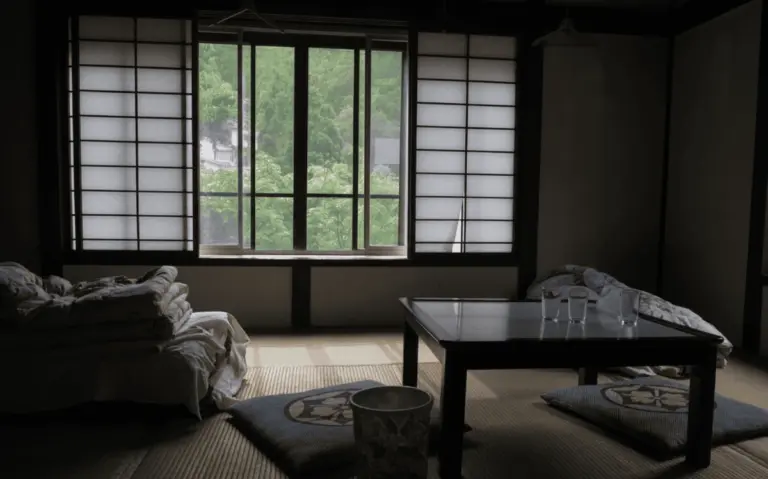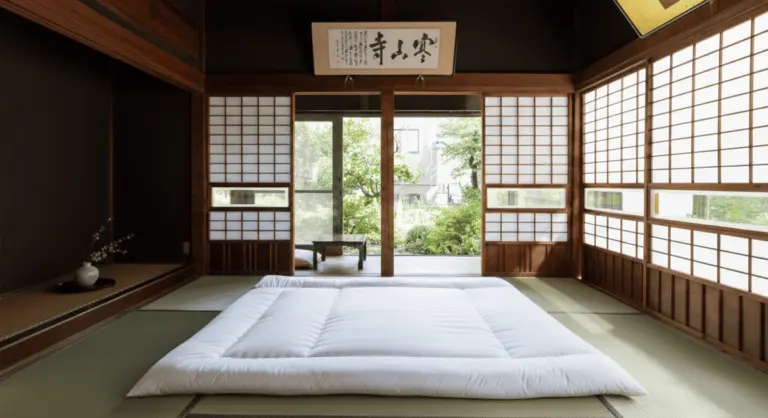Tatami Mat Bedroom: How to Bring Japanese Sleep Style into Your Home
Sleeping Closer to Nature: Designing a Tatami Mat Bedroom
A tatami mat bedroom brings the essence of Japanese simplicity into daily rest—a clean, natural surface where you sleep directly on a futon rather than on a bed. As people seek a slower rhythm and minimalist comfort, this traditional style is finding its way into modern homes. This guide explains how to set up a tatami mat sleeping area, how it transforms the atmosphere of a room, and what to know before adopting this Japanese approach to rest.
Why Choose Tatami for Sleeping
Tatami mats have long been part of Japanese life—woven from natural rush (igusa) and traditionally filled with rice straw. Many modern mats, however, use compressed wood or paper fiber cores for durability and mold resistance while keeping that soft, natural feel.
Sleeping on a futon over tatami encourages neutral posture and keeps air circulating under your body. The woven surface absorbs and releases moisture, creating a comfortable microclimate year-round—cool in summer, warm in winter. More than practical, tatami brings stillness: its subtle scent and smooth texture turn sleep into a ritual of calm and connection.
How to Set Up a Tatami Mat Bedroom
- Lay the tatami: Cover the floor with full or modular mats on wood or other hard flooring.
- Add a shikibuton: Choose a foldable futon 3–4 cm (1–1.5 in) thick for balanced firmness. For extra comfort, some users add a thin underlay pad (tatami topper) between the mat and shikibuton to fine-tune firmness.
- Use a kakebuton (comforter): Light cotton or down keeps temperature balanced across seasons.
- Air regularly: Lift the futon and tatami to dry; sunlight keeps them fresh.
- Avoid carpets underneath: Tatami needs airflow to prevent trapped moisture.
Cultural note: In Japan, tatami is for sleeping or quiet activities like tea or reading. If you want a tatami area for floor-sitting or relaxing, it’s more common to set it up in a living room or study—not a bedroom.
Room Design and Maintenance Tips
- Lighting: Soft, indirect lighting complements tatami’s natural color.
- Materials: Combine linen bedding, wooden accents, and paper screens for warmth.
- Maintenance: Vacuum with a soft brush and wipe lightly with a dry cloth.
In Japan, people often use a dehumidifier or futon dryer during the rainy season (tsuyu) to prevent mold under tatami. If you live in a humid area or experience damp summers, doing the same once a week helps keep your mats fresh and dry.
Recommended Tatami Products (Available in the U.S.)
- EMOOR Japanese Tatami Mattress Set — Traditional rush surface and foldable base; ideal for sleeping with a futon (Amazon US)
- FULI Tatami Mat — Made in Japan, natural igusa top with durable foam core (Amazon US)
- MIINA Washable Tatami Rug — Synthetic washi fiber, mold-resistant and easy to maintain (Amazon US)
- HAGiHARA Japanese Tatami Mat — Lightweight modular mat with firm core and natural aroma; excellent for compact rooms (Amazon US)
- Ikehiko Unit Tatami Panel — Modular mats suitable for full-room layouts (Amazon US)
These options let you create a tatami mat bedroom that blends tradition with modern convenience.
The Calm Beauty of Tatami Living
A tatami mat bedroom is more than a style choice—it’s a quiet return to the essentials. Lying close to the earth, you feel time slow down; your body rests in stillness, your breath follows the rhythm of nature. In that grounded simplicity, every night becomes a small meditation on comfort and care.



